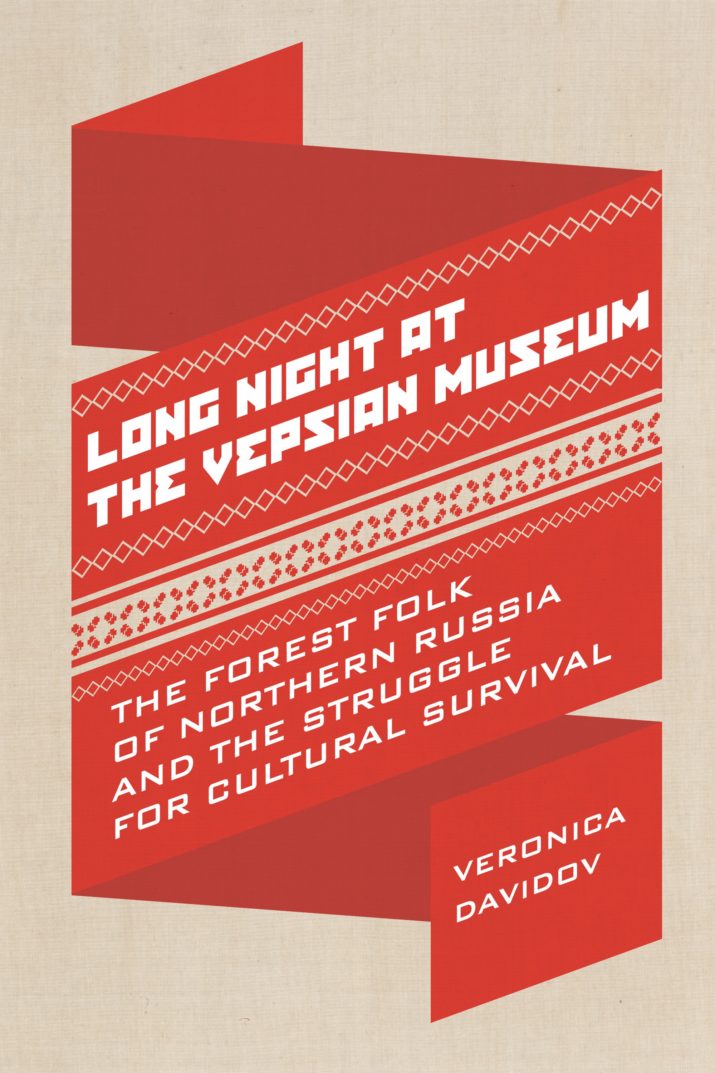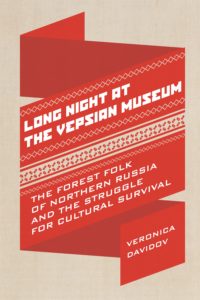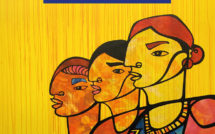
Long Night at the Vepsian Museum: The Forest Folk of Northern Russia and the Struggle for Cultural Survival by Veronica Davidov
 Veronica Davidov’s Long Night at the Vepsian Museum provides a punchy and compelling overview of cosmology, cultural production, and political ecology in Sheltozero, a small Vepsian village in Karelia, northeastern Russia. Because relatively little has been written in English about the Finno-Ugric peoples of northeastern Russia, Davidov’s slim volume represents a substantial empirical contribution to this literature. Through its attention to the role of extractive industries and commercial exchange as mediators of Vepsian identity, the book also intervenes in indigenous studies, complicating the simplistic notion of indigeneity as somehow inevitably opposed to large-scale resource extraction or commerce.
Veronica Davidov’s Long Night at the Vepsian Museum provides a punchy and compelling overview of cosmology, cultural production, and political ecology in Sheltozero, a small Vepsian village in Karelia, northeastern Russia. Because relatively little has been written in English about the Finno-Ugric peoples of northeastern Russia, Davidov’s slim volume represents a substantial empirical contribution to this literature. Through its attention to the role of extractive industries and commercial exchange as mediators of Vepsian identity, the book also intervenes in indigenous studies, complicating the simplistic notion of indigeneity as somehow inevitably opposed to large-scale resource extraction or commerce.
Davidov takes the Sheltozero Vepsian Ethnographic Museum, referenced in the book’s title, as both an ethnographic field site and a structuring device. The book’s introduction is a literal tour of the museum: the wooden statue of the Master of the Forest (a central figure in Vepsian cosmology) that greets museum visitors; the diorama showcasing the achievements of mobile Vepsian stoneworkers who traveled the Russian empire, and later the Soviet Union, with the region’s renowned raspberry quartz; the exhibit case dedicated to the brief-lived, but formative, Veps National Volost (1994-2004). The chapters that follow historicize and contextualize the “cast of human and non-human characters and artifacts” (8) we meet in this introduction.
The first chapter, titled aptly enough “History and Memory,” provides an overview of Vepsian and Karelian history through the mid-2000s; Davidov uses excerpts from life history interviews to illustrate how Sovietization in the 1920s and 1930s, the Finnish presence in Karelia in the early 1940s, and finally mass collectivization following World War II were experienced by her interlocutors. Chapter Two elaborates on the Vepsian cosmology through a discussion of The Master, a spirit being who owns the forest and with whom incursions into the forest must be contractually negotiated. The Master, Davidov argues, structures not only Veps’ interactions with the natural world—for example by meting out punishment to those who presume to say that they will be “right back” from a trip to the forest—but also functions as a key symbol that inflects how Veps think about economic and political power more generally. In Chapter Three, Davidov turns to describing how Karelia’s “clean” nature and distinctive mineral resources enabled the Veps to secure both renown and infrastructural investments during the tsarist and Soviet periods. Both Karelia’s development as an ecotourism destination and the export of Karelian raspberry quartzite and timber, she shows, were welcomed by the Veps because of the resources and recognition they brought to the community. Chapter Four, “Bad Masters,” explores the ways in which, in the Post-Soviet period, this reciprocal exchange between the State and the Veps is replaced by one-sided concessions to foreign and ominously anonymous corporate entities. These “megarenter’s” mining and timber operations uncompromisingly take natural resources out of the region without giving anything back, save a few low paying manual jobs.
The book’s fifth chapter, “The Long Night of Museums,” provides an ethnographically rich overview of Museum Night at the Sheltozero Vepsian Ethnographic Museum. Organized as part of the International Council of Museums European Night of the Museum, the event brought Sheltozero’s youths and adult women to the museum for an evening of trivia. Davidov’s ethnographically rich description of the Museum Night is beautifully written and evocative. More could have been done, however, to connect its “thick description” to the themes and issues raised in preceding chapters. The Chapter is described as a “coda,” but it is less a synthetic conclusion than an outlying ethnographic crescendo.
Long Night at the Vepsian Museum was published as part of University of Toronto Press series of ethnographies designed for undergraduate classroom use and, perhaps for this reason, its prose are relatively unencumbered by the academic citations and theoretical diversions that often plague academic writing. This is both a strength and a weakness. The book is an accessible and fast read and each chapter’s key point or contribution is easily identifiable and concisely made. At the same time, Davidov often alludes to—but does not meaningfully engage with—larger questions and issues raised by her findings. I often found myself wanting more. For example, following a discussion of the community’s proud recollections of a 2006 traditional Vepsian wedding held in Sheltozero by two Muscovites taken with the local culture, Davidov notes that, “Concerns about cultural appropriation or cultural commodification are, in general, not part of indigenous cultural politics in this region of Russia…” (85). While Davidov does explain why her interlocutors desire and appreciate the visibility and recognition exemplified by the Muscovites’ Vepsian wedding, the comparative significance of this point would have been enhanced by a more robust and historicizing analysis.
Overall, Long Night at the Vepsian Museum, is a well-written and engaging contribution to the literature on Post-Soviet Russia and indigenous cultural production. Moreover, the book’s accessibility and clean prose will make it of interest to not only scholars of these fields, but also undergraduate educators looking for a snappy and thought-provoking syllabus addition.
Reviewed by A. Lorraine Kaljund, Standford University
Long Night at the Vepsian Museum: The Forest Folk of Northern Russia and the Struggle for Cultural Survival
By Veronica Davidov
Publisher: University of Toronto Press
Paperback / 160 pages / 2017
ISBN: 9781442636187
To read more book reviews, please click here.
Published on July, 2 2018.




